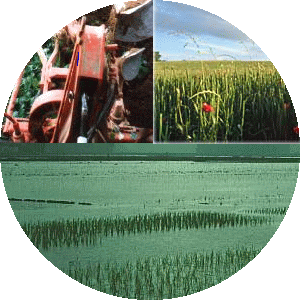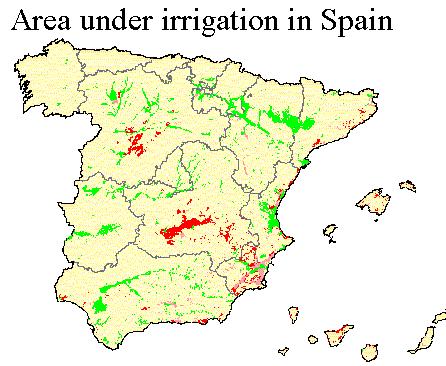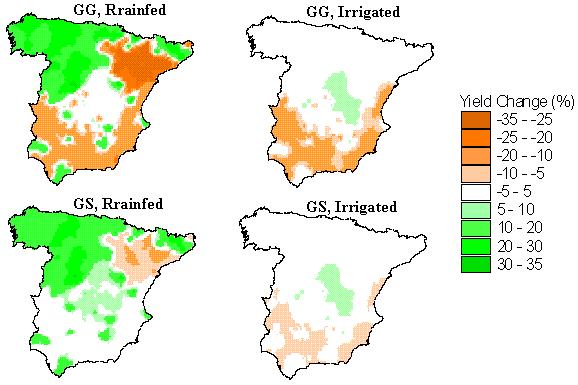 > ENC Master > Climate Encyclopaedia > Food & Climate > more > 2. Predicting the future > - case study. Spain
> ENC Master > Climate Encyclopaedia > Food & Climate > more > 2. Predicting the future > - case study. Spain
 |
|
|
|
|
Case studies in developed countriesThe case study of SpainBackground: Agriculture in Spain is both the main use of the land in terms of area (over 50% of total land area) and the principal water-consuming sector (over 60% of total water consumption).
|
|
Problem: Spain is undergoing rapid changes in the structure of its agricultural sector, increased demands on land and water resources, and exacerbated pressures on the environment. Projecting climate change impacts on national agriculture should help to prepare the sector yet another factor possible transformation. The aim is to examine the regional competitive advantage of dry land agricultural production in Spain in order to project future land use. Methods: Crop models integrated in Decision Support Systems can be used to evaluate crop productivity testing the relative economic advantages of changes in management options.
|
Scenarios: Climate change scenarios for the 2050s were developed from a Global Circulation Model (GCM) of the United Kingdom Hadley Centre. In the GCM simulations of future climate, greenhouse gas forcing is gradually increased in the GCM simulations through time (1% per year increase, compounded, in equivalent CO2). |
|
|
This scenario is designated GG. A second simulation includes the effects of sulphate aerosols in addition to CO2 increases and is designated GS. Sulphate aerosols tend to reflect and scatter solar radiation and thus introduce a cooling forcing factor into the GCM simulations. Results: Despite the uncertainties associated with the use of GCMs, it is clear that even in the best case (GS) agricultural production would perform below average in the Central regions of Spain which represent the most productive regions. Consequently, crop production in Spain is expected to decline in the climate change scenarios. Considering the current high production costs and the variability in the water available for irrigation, crop production may be abandoned in some areas, especially in Central Spain, unless major changes in the management of the crop are implemented.
|
Author: Marta Moneo and Ana Iglesias- Universidad Politécnica de Madrid - España |


